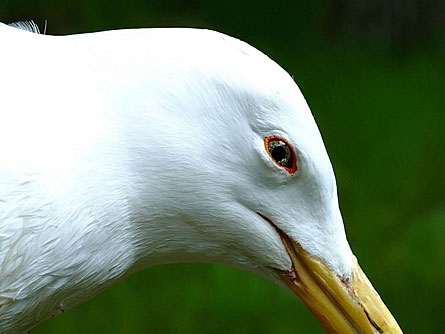Mysterious bird deaths around the Baltic Sea and possibly elsewhere in the world may be caused by a shortage of the vitamin thiamine, researchers say.

Wild birds of varied species along the Baltic coasts have been dying of hard-to-explain paralysis since at least 1982, says Lennart Balk of Stockholm University in Sweden. He and his colleagues have now studied the illness in three species with different life styles — herring gulls, common starlings and common eiders. Paralytic deaths in all three result from shortages of thiamine (vitamin B1), he and his colleagues report online July 13 in Proceedings of the National Academy of Sciences.
As for what’s causing the vitamin deficiencies, though, “the correct answer is, we don’t know,” Balk says.
“It seems definitely to be widespread,” he says. Though Balk and his colleagues looked at only three species in detail, the team found signs of the syndrome in 28. Balk and his colleagues also found lesser degrees of thiamine shortages during detailed studies in Iceland.
The team did not look at North American wildlife, but Balk notes that in the Great Lakes region, fish have a similar problem. Their “early mortality syndrome” or “Cayuga syndrome” has been traced to a thiamine deficiency.
Fish deaths in Sweden gave the first hint of thiamine trouble for birds in the Baltic region, Balk says. In the 1970s, salmon and sea trout eggs and larvae were perishing in puzzling numbers. Not until the mid-1990s, he says, did researchers realize that a vitamin deficiency was the cause.
That insight inspired Balk and his colleagues to test the region’s birds. Observers had reported a strange paralysis gradually killing birds. Victims at first have trouble holding their wings at their sides, then stop flying and eating, and eventually die.
In their detailed study of the three species, researchers found that a shot of B1 cured almost every sick gull, starling or eider they treated. Also physiological tests such as assays of enzymes showed a shortage of the vitamin compared with those in healthy populations.
Blaming the paralysis on thiamine deficiency sounds absolutely plausible, says ecotoxicologist Marisol Sepúlveda of Purdue University in West Lafayette, Indiana. She and her colleagues found a similar problem in alligator eggs in Florida. Eggs recovered from sites where unusual proportions of embryos died had thiamine deficiencies compared with other sites, she says. Alligators in Florida prey on an exotic fish species known to contain high concentrations of an enzyme that degrades thiamine.
As for the cause of the birds’ troubles, she says, “I think that change in natural diets is probably one of the most important hypotheses that needs to be explored.”
So far there hasn’t been a lot of discussion among North American bird conservationists about thiamine deficiencies as a cause of bird deaths, says ornithologist Greg Butcher of the National Audubon Society’s Washington, D.C., office. The new study, he says, “is a shot across the bow.”






